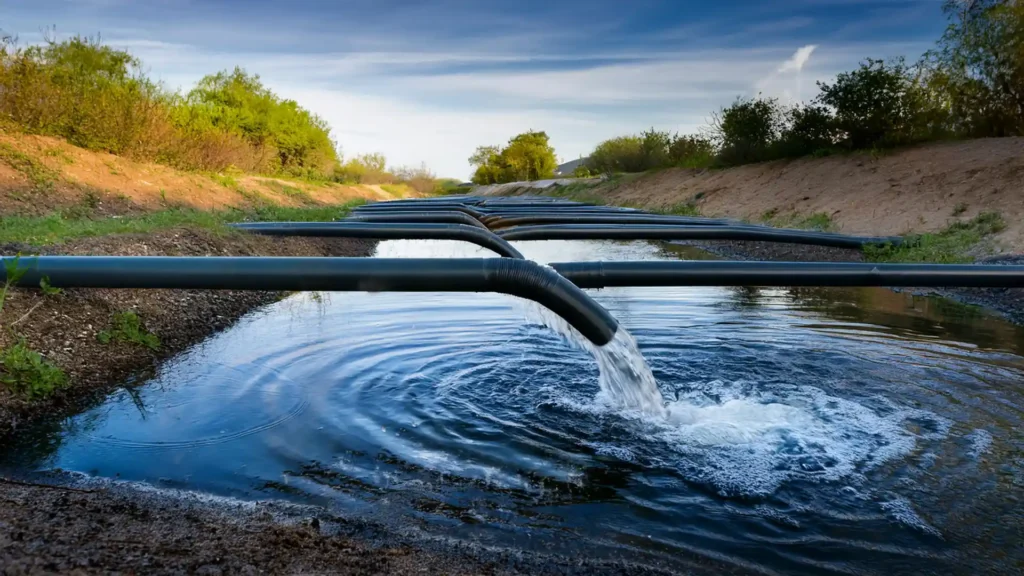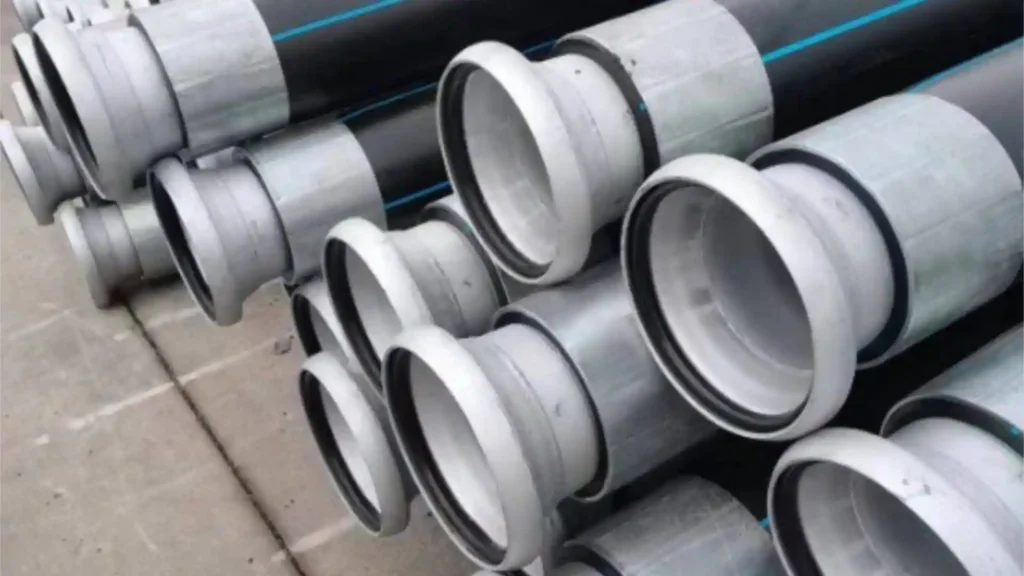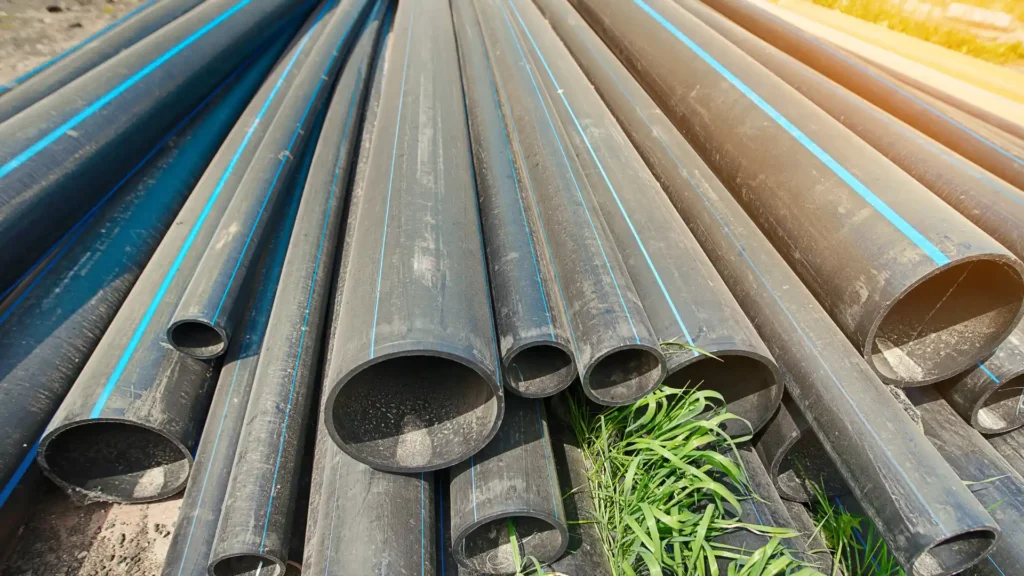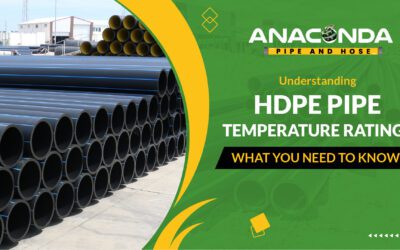- Understanding HDPE Pipe Sizes
- Common Mistake 1: Ignoring Flow Rate Requirements
- Common Mistake 2: Overlooking Pressure Ratings
- Common Mistake 3: Neglecting Temperature Considerations
- Common Mistake 4: Misunderstanding SDR (Standard Dimension Ratio)
- Common Mistake 5: Failing to Consider Future Expansion
- Common Mistake 6: Disregarding Installation Environment
- Common Mistake 7: Overlooking Compatibility with Fittings and Valves
- Common Mistake 8: Neglecting Industry Standards and Regulations
- Tools and Resources for Proper HDPE Pipe Size Selection
- Conclusion
- FAQs
High-density polyethylene (HDPE) pipes have become increasingly popular in various industries due to their durability, flexibility, and corrosion resistance. However, selecting the right HDPE pipe sizes is crucial for ensuring optimal performance and longevity of your piping system. This comprehensive guide will explore common mistakes to avoid when choosing HDPE pipe sizes and provide valuable insights to help you make informed decisions.

Understanding HDPE Pipe Sizes
Before delving into common mistakes, it’s essential to understand what HDPE pipe sizes entail. HDPE pipe sizes refer to the dimensions of the pipe, including its diameter and wall thickness. These measurements are critical in determining the pipe’s capacity, pressure rating, and suitability for specific applications.
An HDPE pipe size chart is a valuable resource for selecting the correct pipe size. These charts provide essential information about various pipe dimensions, including nominal size, outside diameter (OD), and wall thickness. Understanding how to read and interpret these charts is crucial for avoiding sizing errors.
The HDPE pipe OD size, or outside diameter, is a key measurement used in pipe selection. It represents the actual measured outer diameter of the pipe and is often used in conjunction with the wall thickness to determine the pipe’s pressure rating and flow capacity. When consulting an HDPE pipe size chart, you’ll notice that the HDPE pipe OD size is typically listed in both inches and millimeters for easy reference.
It’s important to note that the HDPE pipe OD size remains constant for a given nominal pipe size, regardless of the pipe’s pressure rating or SDR (Standard Dimension Ratio). This consistency in HDPE pipe OD size allows for easier system design and component compatibility across different pressure classes.
Common Mistake 1: Ignoring Flow Rate Requirements
One of the most critical factors in selecting HDPE pipe sizes is the required flow rate for your application. Ignoring or miscalculating flow rate requirements can lead to significant problems later on.
To avoid this mistake:
- Calculate the required flow rate based on your specific application needs.
- Consider peak flow rates and potential future increases in demand.
- Use flow rate calculators or consult with experts to ensure accuracy.
Selecting a pipe that’s too small for the required flow rate can result in increased pressure loss, reduced efficiency, and potential system failure. Conversely, oversizing the pipe can lead to unnecessary costs and reduced flow velocity, which may cause sediment buildup in some applications.
Common Mistake 2: Overlooking Pressure Ratings
HDPE pipe sizes come with specific pressure ratings that indicate the maximum internal pressure they can safely withstand. Overlooking these ratings when selecting pipe sizes can lead to catastrophic failures.
To avoid this mistake:
- Determine the maximum operating pressure of your system.
- Consider pressure fluctuations and potential surge pressures.
- Select a pipe size with a pressure rating that exceeds your system’s requirements.
Remember that HDPE pipe sizes and pressure ratings are interconnected. Generally, larger-diameter pipes with thicker walls can withstand higher pressures. Always consult the HDPE pipe size chart to ensure you’re selecting a pipe that meets both your size and pressure requirements.

Common Mistake 3: Neglecting Temperature Considerations
Temperature plays a significant role in the performance and longevity of HDPE pipes. Failing to account for temperature variations can lead to pipe failure or reduced lifespan.
To avoid this mistake:
- Consider both the temperature of the fluid being transported and the ambient temperature.
- Be aware that HDPE pipe sizes can expand or contract with temperature changes.
- Adjust your pipe size selection to accommodate temperature-related stress & they come with different HDPE pipe sizes.
In high-temperature applications, you may need to select a larger pipe size or a pipe with a higher pressure rating to compensate for the reduced strength of the material at elevated temperatures.
Common Mistake 4: Misunderstanding SDR (Standard Dimension Ratio)
The Standard Dimension Ratio (SDR) is a crucial factor in the HDPE pipe size chart and in the selection of HDPE pipe sizes & often misunderstood. SDR is the ratio of the pipe’s outside diameter to its wall thickness and directly affects the pipe’s pressure rating.
To avoid this mistake:
- Understand that a lower SDR number indicates a thicker wall and higher pressure rating.
- Consider how SDR affects both the pipe’s internal diameter and its pressure capacity.
- Use the HDPE pipe size chart to find the appropriate SDR for your application.
Misinterpreting SDR can lead to selecting a pipe that doesn’t meet your pressure requirements or has an insufficient internal diameter for your flow needs.
Common Mistake 5: Failing to Consider Future Expansion
When selecting HDPE pipe sizes, it’s crucial to think beyond current needs and consider potential future expansion or changes in system requirements.
To avoid this mistake:
- Assess potential increases in demand or flow requirements.
- Consider the cost implications of future modifications versus initial oversizing.
- Balance current needs with future possibilities to find the optimal pipe size.
While oversizing pipes can lead to higher initial costs, it may be more economical in the long run if you anticipate significant increases in demand. Conversely, undersizing to save on upfront costs can result in expensive system upgrades later.

Common Mistake 6: Disregarding Installation Environment
The environment in which the HDPE pipe will be installed can significantly impact the required pipe size and specifications.
To avoid this mistake:
- Consider soil conditions for buried pipes, including potential ground movement or settlement.
- Account for burial depth and surface loads for underground installations.
- Adjust selections for above-ground installations, considering factors like UV exposure and temperature fluctuations.
Different installation environments may require variations in pipe wall thickness or diameter to ensure long-term performance and safety.
Common Mistake 7: Overlooking Compatibility with Fittings and Valves
Selecting the right HDPE pipe sizes isn’t just about the pipe itself; it’s also crucial to ensure compatibility with fittings, valves, and other system components.
To avoid this mistake:
- Verify that selected pipe sizes are compatible with available fittings and valves.
- Consider the impact of fittings on flow characteristics and pressure ratings.
- Ensure proper fit and sealing at all connection points.
When selecting fittings and valves, pay close attention to the HDPE pipe OD size. Many fittings are designed to match specific HDPE pipe OD sizes, so using the correct size is essential for a proper fit and seal. Remember that the HDPE pipe OD size is the key measurement for matching pipes with fittings, not the nominal pipe size or internal diameter.
Incompatibility between pipes and fittings can lead to leaks, reduced system efficiency, and increased maintenance costs. Always double-check that your chosen fittings are designed for the specific HDPE pipe OD size you’re using in your system.
Common Mistake 8: Neglecting Industry Standards and Regulations
Various industry standards and regulations govern HDPE pipe sizes and specifications. Neglecting these can result in non-compliant installations and potential legal issues.
To avoid this mistake:
- Familiarize yourself with relevant standards for HDPE pipe sizes in your industry and region.
- Stay updated on changing regulations that may affect pipe size requirements.
- Ensure that your selected pipes meet or exceed all applicable standards.
Compliance with industry standards not only ensures legal operation but also assures quality and performance.

Tools and Resources for Proper HDPE Pipe Size Selection
To help you avoid these common mistakes, several tools and resources are available:
- HDPE pipe size charts: These comprehensive charts provide essential information about pipe dimensions, pressure ratings, and SDR values. Learn to read and interpret these charts accurately.
- Pipe sizing software and calculators: Many manufacturers and industry organizations offer software tools to help calculate optimal pipe sizes based on your specific requirements.
- Expert consultation: When selecting pipe sizes for complex or critical applications, don’t hesitate to consult with HDPE pipe manufacturers or experienced engineers.
Conclusion
Selecting the right HDPE pipe sizes is a critical decision that impacts the performance, efficiency, and longevity of your piping system. By avoiding these common mistakes and utilizing available resources like HDPE pipe size charts, you can ensure that your pipe selection meets both current needs and future demands.
Remember to consider all relevant factors, including flow rate, pressure requirements, temperature conditions, and installation environment. Pay attention to SDR values, plan for potential expansion, and ensure compatibility with other system components.
By taking a comprehensive approach to HDPE pipe size selection and avoiding these common pitfalls, you’ll be well-equipped to design and implement a piping system that performs optimally for years to come. Whether you’re working on a small residential project or a large industrial installation, the principles of proper pipe sizing remain the same. Take the time to do it right, and you’ll reap the benefits of a well-designed, efficient, and reliable HDPE piping system.

FAQs
What is an HDPE pipe size chart, and why is it important?
An HDPE pipe size chart is a tool that provides essential information about various pipe dimensions, including nominal size, outside diameter (OD), and wall thickness. It is crucial to select the correct pipe size to ensure compatibility with system requirements and to avoid sizing errors.
How do I determine the correct HDPE pipe OD size for my project?
The HDPE pipe OD size, or outside diameter, is a key measurement used in pipe selection. It is determined by consulting an HDPE pipe size chart, which lists OD sizes in both inches and millimeters. This consistency helps in system design and ensures compatibility across different pressure classes.
What role does the HDPE pipe OD size play in pressure ratings?
The HDPE pipe OD size, combined with wall thickness, determines the pipe’s pressure rating. A larger OD size with the same wall thickness can handle higher pressures. It’s important to consult the HDPE pipe size chart to ensure the selected pipe meets your system’s pressure requirements.
Why is it important to consider future expansion when selecting HDPE pipe sizes?
Considering future expansion ensures that the piping system can accommodate increased demand or flow requirements without requiring costly upgrades. Oversizing initially might be more economical in the long run if significant demand increases are anticipated.
How does temperature affect HDPE pipe sizes?
Temperature changes can cause HDPE pipes to expand or contract, affecting their performance and lifespan. It’s essential to select a pipe size that accommodates temperature-related stress, especially in high-temperature applications, by consulting the HDPE pipe size chart for appropriate adjustments.






0 Comments